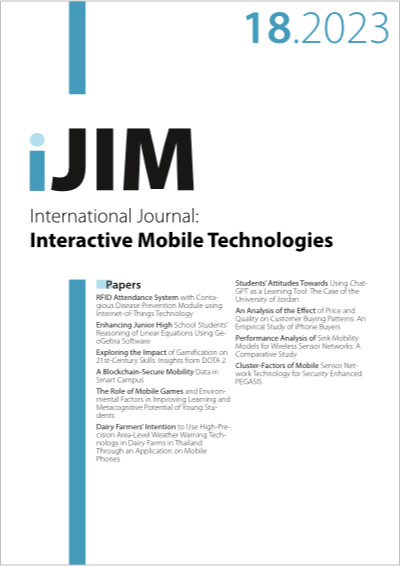Cluster-Factors of Mobile Sensor Network Technology for Security Enhanced PEGASIS
DOI:
https://doi.org/10.3991/ijim.v17i18.42915Keywords:
Mobile wireless sensor networks; EPEGASIS; Network latency; energy usage; Nodes; LEACH;Abstract
Mobile wireless sensor networks (MWSNs) have been a hot topic of research, and numerous routing methods have been developed to increase energy efficiency and extend longevity. Nodes close to the sink often use more energy to transmit data from their neighbors to the sink, which causes them to run out of energy faster. These places are also referred to as rendezvous points, and choosing the best one is a hard task. The likelihood of choosing an ideal node as the rendezvous point will be extremely low because hierarchical algorithms only use their local information to select these places. The warm spot problem is addressed from four angles in this work using the Enhanced Power-Efficient Gathering in Sensor Information Systems (EPEGASIS) technique. In order to limit the amount of energy used during transmission, the ideal communication distance is first calculated. To balance the energy consumption among the nodes, mobile sink technology is employed once a threshold value is set to safeguard the dying nodes. The node can then modify its communication range based on how far away the sink node is from it. Thorough testing has been done to demonstrate that our suggested EPEGASIS works better in terms of longevity, drive usage, and web latency.
Downloads
Published
How to Cite
Issue
Section
License
Copyright (c) 2023 Dr. T. K. Sivakumar, Saurabh Dhyani, Dr. S.V. Manikanthan, Dr. Vishnu Kumar Kaliappan, Dr. K. Baskaran

This work is licensed under a Creative Commons Attribution 4.0 International License.



